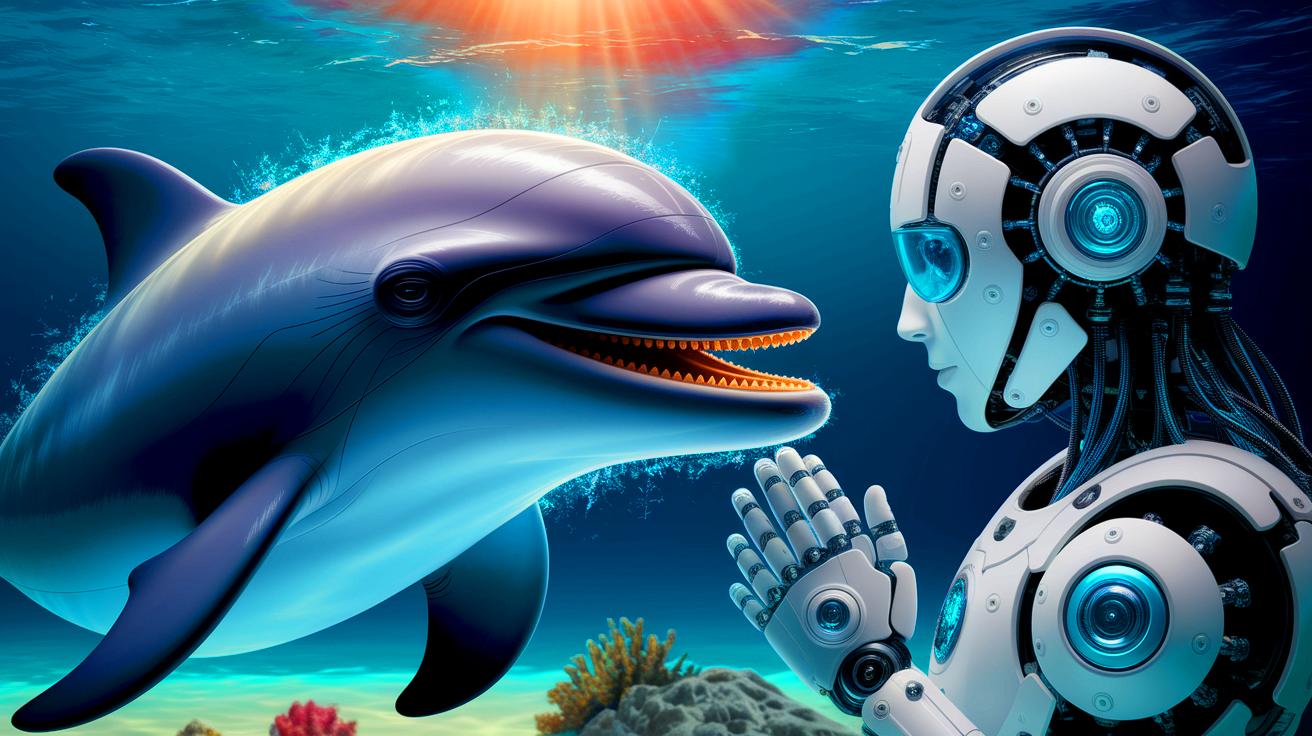Google Partners with Marine Researchers to Decode Dolphin Language
Google, in collaboration with the Georgia Institute of Technology and the nonprofit Wild Dolphin Project (WDP), has developed DolphinGemma, the first large language model (LLM) specifically designed to analyze dolphin vocalizations. Trained on WDP's extensive 40-year acoustic database of Atlantic spotted dolphins, this AI system processes and generates dolphin-like sounds, potentially unlocking the secrets of cetacean communication.
"When I first heard it played back, I was dancing around the room," said Thad Starner, a computer scientist at Georgia Tech and Google DeepMind, expressing his excitement about the model's capabilities.
The technology uses Google's SoundStream tokenizer to efficiently represent dolphin sounds, which are then processed by a specially designed model architecture suited for complex acoustic sequences. With approximately 400 million parameters, DolphinGemma is optimized to run on Google Pixel smartphones used by researchers during field studies in the open ocean.
DolphinGemma functions as an audio-in, audio-out model that can process sequences of natural dolphin sounds to identify patterns and predict subsequent sounds in a sequence—similar to how human language models predict text—but tailored for the unique acoustic patterns of dolphins.
Field Research Transforms With Advanced AI Tools
Researchers are deploying DolphinGemma on WDP expeditions to enhance their understanding of dolphin communication in real-time. The system integrates with CHAT (cetacean hearing augmented telemetry), a technology developed by Starner's team at Georgia Tech, which enables two-way interactions with dolphins.
During field experiments, researchers play AI-generated dolphin-like sounds while presenting or manipulating objects, observing how the animals respond. This approach helps identify potential connections between specific vocalizations and behaviors or objects, gradually building a vocabulary of meaningful exchanges.
"Using AI analysis isn't just quicker. It could give us the opportunity to see patterns that, from a human perspective, we may not look at," explains Thea Taylor, managing director of the Sussex Dolphin Project, who is not involved in the Google initiative.
The use of standard Pixel smartphones dramatically reduces the need for custom hardware, improves system maintainability, lowers power consumption, and reduces the size and cost of field equipment—all crucial advantages for marine research.
Scientific Community Responds With Enthusiasm and Caution
Scientists across disciplines have responded to DolphinGemma with both excitement and measured skepticism. While some see it as a potential revolution in interspecies communication, others caution against overstating what the technology can achieve.
"Language is infinitely complex. If you have a separate word for every object in your environment, that's not a language," noted Arik Kershenbaum, a zoologist quoted in Scientific American's coverage of the project. "This is not about translation."
Denise Herzing, a marine mammal researcher with the Wild Dolphin Project, sees parallels between AI's pattern recognition and human communication: "It's like when I'm typing into Google and it's finishing my sentence," suggesting AI might provide unprecedented insights into dolphin cognition.
The project joins other ambitious initiatives in the growing field of AI-assisted animal communication. The Earth Species Project is developing machine learning models to decode various animal vocalizations, while Project CETI focuses specifically on sperm whale communication using automatic coda detectors and graph-based clustering techniques.
Ethical Considerations Surface as Technology Advances
As AI technology enables potential communication with non-human species, significant ethical questions emerge about how these capabilities might reshape human-animal relationships.
Ethicists and animal rights advocates highlight both opportunities and concerns. On one hand, meaningful communication could foster greater empathy and potentially lead to enhanced legal protections for marine mammals. Conversely, there are worries about misinterpretation of animal signals or even exploitation.
"This is an interesting approach, but researchers must take care that they aren't unintentionally training the dolphins," cautions Taylor. "If the dolphins repeat the sound, we have to think whether that's actually an understanding of language—or whether it's the same as teaching a dog to sit because they get a reward."
Other experts question whether authentic communication is even possible given fundamental differences in how dolphins perceive and interact with the world. Some fear premature conclusions could lead to misleading interpretations of dolphin intelligence and needs.
Herzing wonders if better understanding might transform our relationship with these marine mammals: "Maybe [understanding them] would make us connect differently—and realize that these species have the right to a healthy existence."
Future Implications for Conservation and Interspecies Relations
Google plans to release DolphinGemma as an open model later in 2025, potentially accelerating research across marine mammal studies worldwide. While initially trained on Atlantic spotted dolphins, researchers hope to extend the model to other cetacean species.
The long-term vision extends beyond scientific curiosity to practical applications in conservation. Understanding how dolphins respond to environmental stressors—like shipping traffic, sonar interference, or pollution—could inform more effective marine protection policies.
"The ultimate goal of this observational work is to understand the structure and potential meaning within these natural sound sequences—seeking patterns and rules that might indicate language," states Google's blog on the project.
While a true "conversation" with dolphins remains distant, even modest advances in understanding their communication could significantly impact conservation efforts and transform our relationship with the ocean's most intelligent inhabitants.
As technology continues to bridge the communication gap between species, one question remains central: Will these tools help us better protect and coexist with marine life, or will they simply redefine the boundaries between human and animal domains?




